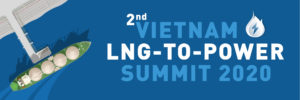IRAN POWER MARKET
Oil and Gas Market
Iran, a member of the Organization of the Petroleum Exporting Countries (OPEC), ranks among the world’s top four holders of both proven oil and natural gas reserves. In 2012, Iran saw unprecedented drops in its oil exports as sanctions by the United States (U.S.) andEuropean Union (EU) were tightened, targeting Iranian oil export revenues. Preliminary data show that Iran ranked fifth in terms of crude oil and condensate exports, which was in contrast to its third position only two years ago. Given the sanctions and resulting drop in production, export volumes likely will continue to be hampered.
Iran has the world’s second largest natural gas reserves, but the sector is underdeveloped and used mostly to meet domestic demand. In contrast to the decreasing oil production, natural gas development has been slowly expanding. Nonetheless, natural gas production has been lower than expected as a result of a lack of foreign investment and technology.
Natural gas accounted for about 59 percent of Iran’s total domestic energy consumption in 2010, with oil consumption at 39 percent of total energy use. Iran had marginal contributions from coal and hydropower.
According to Oil & Gas Journal, as of January 2013, Iran has an estimated 154 billion barrels of proven oil reserves, nine percent of the world’s total reserves and over 12 percent of OPEC reserves.
Electricity
In 2011, Iran generated approximately 220 billion kilowatthours (Bkwh) of electricity. This power was generated from a network capacity of 64 gigawatts (GW), which is strained during times of peak demand. Approximately 95 percent of total electricity supply during the year was generated by conventional thermal electric power. The remaining portion was from hydroelectric and other renewable sources, with marginal generation from a nuclear power plant that came online in the third quarter of 2011 and operated below maximum capacity for most of the next 12 months.
Iran’s first nuclear power plant at Bushehr came online after many years of delay, launching operations of the plant’s first unit. Construction at this power plant originally began in the mid-1970s, but was repeatedly delayed by the Iranian Revolution, the Iran-Iraq war, and more recently by problems associated with the Russian consortium that was awarded the construction contract. The first unit of the power plant reached its full capacity in August 2012 at 1,000 megawatts (MW). Two additional units are planned at Bushehr, each with a planned capacity of 1,000 MW.
Iran’s government plans to construct additional nuclear power plants, the next of which is likely to be a station near Darkhovin with a generation capacity of 360 megawatts, although initial plans included capacity of more than 1,000 MW. However, sanctions imposed on Iran’s controversial nuclear program may prevent the development of not only this nuclear power plant, but also adversely affect thermal and hydroelectric projects due to a lack of financing and necessary technology.
In addition to nuclear power plants, the Iranian government is focused on expanding power generation from thermal sources, with a number of new projects being developed as independent power projects, including a station near Assaluyeh (natural gas-fired), one in the East Azerbaijan province (gas-fired combined-cycle), and another at Parehsar on the Caspian Sea coast. Increasing its generation capacity will help ensure that Iran can meet its increasing domestic demand and continue to export electric power to neighboring countries. Preliminary data show that as of 2011, Iran was a net exporter of electric power to Armenia, Pakistan, Turkey, Iraq, and Afghanistan. Azerbaijan and Armenia supply electricity to Iran under a swap agreement.
Upcoming Events


